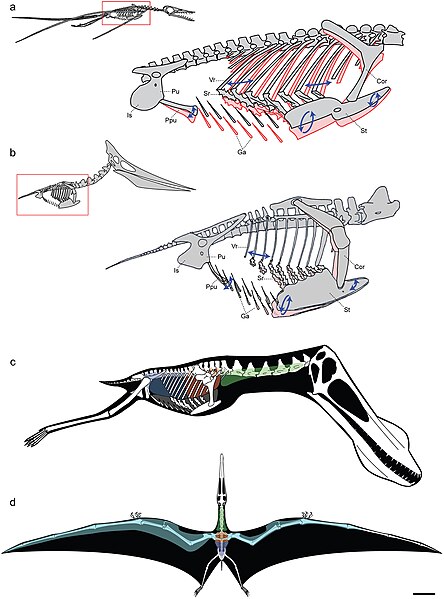Lêer:Pterosaur respiratory system.jpg

Grootte van hierdie voorskou: 444 × 599 piksels. Ander resolusies: 178 × 240 piksels | 356 × 480 piksels | 569 × 768 piksels | 759 × 1 024 piksels | 1 517 × 2 048 piksels | 3 006 × 4 057 piksels.
Oorspronklike lêer (3 006 × 4 057 piksels, lêergrootte: 2,52 MG, MIME-tipe: image/jpeg)
Lêergeskiedenis
Klik op die datum/tyd om te sien hoe die lêer destyds gelyk het.
| Datum/Tyd | Duimnael | Dimensies | Gebruiker | Opmerking | |
|---|---|---|---|---|---|
| huidig | 21:17, 2 Maart 2009 |  | 3 006 × 4 057 (2,52 MG) | FunkMonk | {{Information |Description=Models of ventilatory kinematics and the pulmonary air sac system of pterosaurs. a, Model of ventilatory kinematics in Rhamphorhynchus. Thoracic movement induced by the ventral intercostal musculature results in forward and out |
Lêergebruik
Die volgende bladsy gebruik dié lêer:
Globale lêergebruik
Die volgende ander wiki's gebruik hierdie lêer:
- Gebruik in ar.wikipedia.org
- Gebruik in en.wikipedia.org
- Gebruik in es.wikipedia.org
- Gebruik in it.wikipedia.org
- Gebruik in ko.wikipedia.org
- Gebruik in nl.wikipedia.org
- Gebruik in oc.wikipedia.org
- Gebruik in outreach.wikimedia.org
- Gebruik in pt.wikipedia.org
- Gebruik in ru.wikipedia.org
- Gebruik in tr.wikipedia.org
- Gebruik in vi.wikipedia.org
- Gebruik in zh.wikipedia.org

